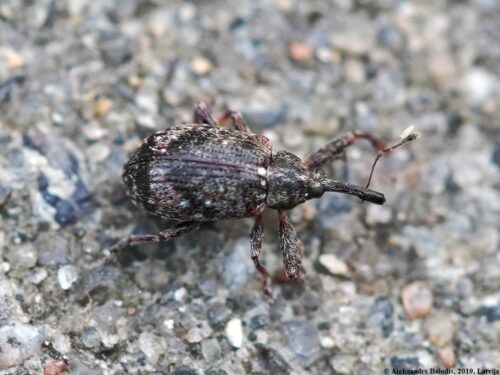Apple blossom weevil; the 3 mm large Xke
Apple blossom weevil (Anthonomus pomorum). These 3 mm large b
The apple blossom weevil hibernates under loose pieces of bark.
Damage from apple blossom weevil – especially in years with poor flowering – can be extensive. In the past, the apple blossom weevil was considered useful because it provides natural fruit thinning.
Where to find
Control
Tricky to to control; as soon as small holes become visible in the petals, check for apple blossom weevil larvae and remove them.
Affected blossoms of apple trees in vegetable and ornamental gardens are best cut away. Inside the desiccated flower buds is the larva or beetle. By removing the affected blossoms, fewer apple blossom weevils will be found on the apple
Prevention
Provide a bird-friendly environment: bird

